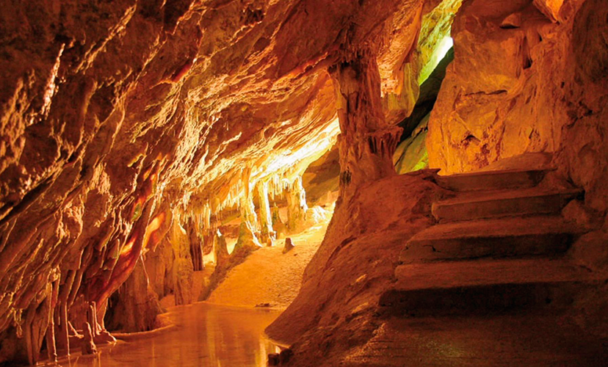The island of Ibiza has always been shrouded in a cloak of mysticism. The blending and mixing of the many cultures that have peopled this land have created a whole miscellany of traditions and lore that have endured until the present day. At 150 metres above sea level, the Cave of Es Culleram in Sant Vicent de sa Cala harbours the island’s biggest sanctuary, to which thousands of people still throng to adore the goddess Tanit who has been worshipped there since time immemorial.
Tanit is the most important deity in Carthaginian mythology, representing fertility and the moon. The cave, which is the largest sanctuary in the Mediterranean dedicated to the Goddess, has three main parts, the external area where sacrifices were performed, a central zone where the goddess resided, and a final area in the deepest recess of the cave where the ashes of the sacrifices were deposited.
The sanctuary was discovered in 1907 and was found to contain 600 complete terracotta sculptures with over 1000 heads and fragments of others, most of which represent Tanit with a bell-shaped female figure. The cave is currently open to the public and entry is free.
Even today the goddess lives on in her multiple depictions in clay or jewellery of all kinds, created by traditional potters and craftsmen, which are sold all over the island and in particular in the many stalls at the Las Dalias Craft Market.
The Puig des Molins Ethnology Museum in Ibiza displays the oldest bust of the goddess found on the island, together with all the information on the deity, however, it is still possible to perceive the deep rooted presence of this figure in Ibizan society. With women of all ages named Tanit, and use of her figure in prizes and awards, logos or commercial outlets, her presence is still felt.
According to legend, the Carthaginians considered Ibiza to be a perfect island as there were no poisonous creatures there, and it was possible to dock and moor vessels with facility, which made conquering the island easy. However, on their first expeditions to the white island, it was lashed for several days by violent storms and its red earth washed into the sea and turned it red, reminding the would-be conquerors of Tanit’s ritualistic blood baths. According to popular legend, they took this to be a good omen and established their religious cult on the island.

